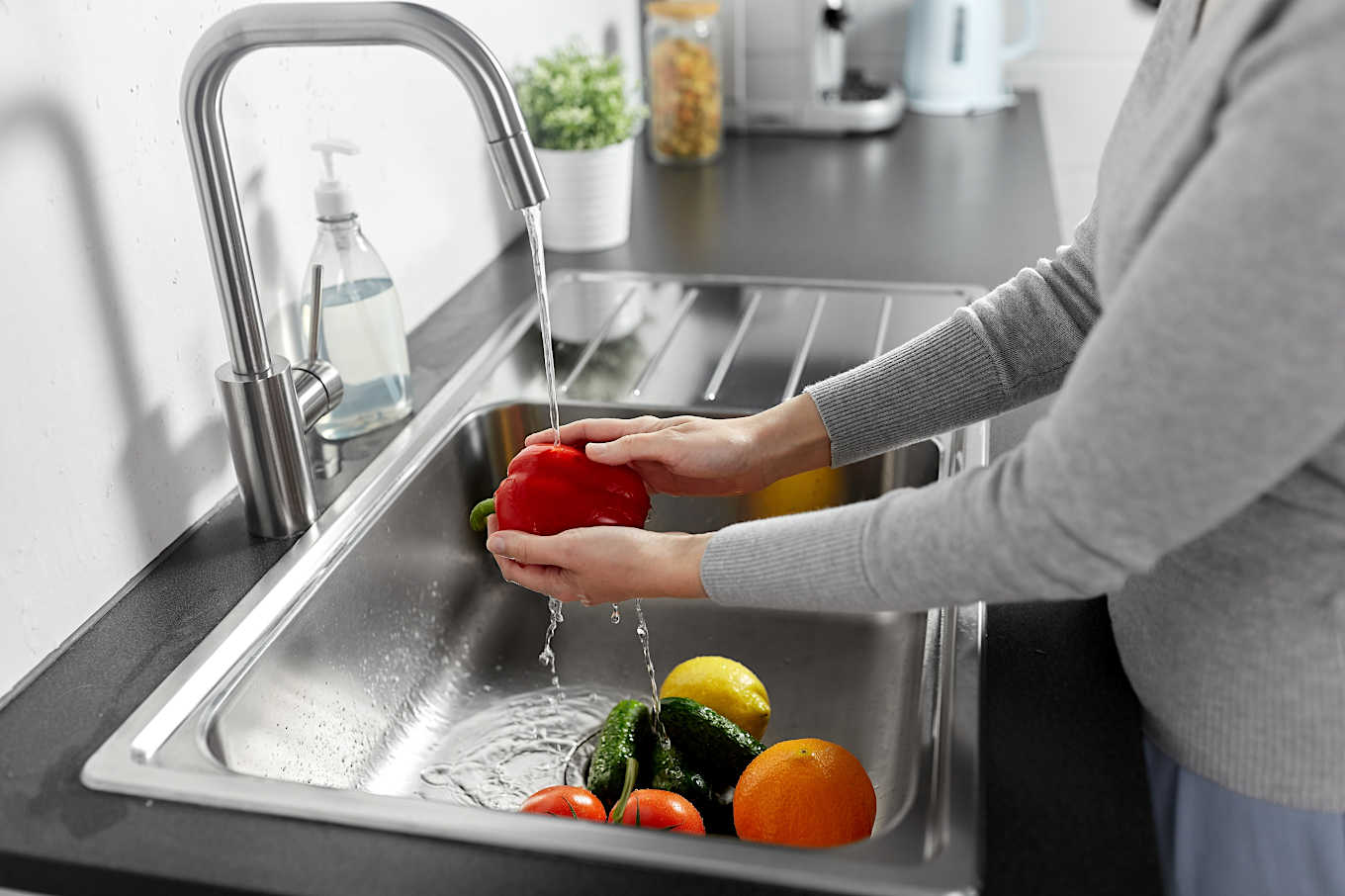15 Essential food safety tips for your home kitchen
- 3 Minutes Read
Do you take the time to follow food safety guidelines and tips in your home, or do you get careless, putting you and your loved ones at risk of foodborne illness? Take a moment and pretend to be a food safety inspector- complete a safety check of your home kitchen.
There seems to be no shortage of news stories about an E. coli outbreak traced to a restaurant chain or listeria discovered in produce from a food company. It's human nature to get alarmed about such incidents and blame restaurants, produce companies, and other public food supply sources. But, how clean and safe is your very own kitchen? Do you apply essential food safety practices at home? If your food safety knowledge is limited to "you should wash your hands after handling raw meat," maybe you need a refresher. Read on for invaluable and possibly life-saving food safety tips.
Foodborne illness (aka food poisoning) is an infection or irritation of the digestive tract caused by food or beverage that contains harmful substances, such as bacteria, viruses, parasites, or molds. The Centers for Disease Control and Prevention (CDC) estimates that 48 million (about 1 in 6) Americans get ill, 128,000 become hospitalized, and 3,000 die each year from foodborne illness. Learn more about the incidence, common culprits, and seriousness of foodborne illness by visiting www.fightbac.org, a science-based, expert site on food safety.
Much like the contagious stomach "bug" or "flu" that can circulate among families and children, common symptoms of foodborne illness include vomiting, diarrhea, abdominal pain, fever, and chills. It is often mistaken for the flu, as in influenza, and it can be tough to tell the difference. The flu usually includes respiratory symptoms, like a cough, nasal congestion, sore throat, and runny nose, while foodborne illness has more nausea, vomiting, and diarrhea.
Certain groups of people are most vulnerable to foodborne illness, including children, pregnant women, the elderly, and those with compromised immune systems.
Wash your hands well before, during, and after handling food. Experts tell us that proper handwashing may eliminate about half of all food poisoning. Wash hands for at least 20 seconds, including the backs of hands, between fingers, and under the nails. Always wash hands after handling raw meat, poultry, and seafood.
Clean surfaces. Keep a spray bottle of equal parts white vinegar and water to spray and wipe down counters, stovetops, or refrigerator surfaces. Wipe handles and doorknobs with this solution also. The acetic acid in vinegar makes an excellent disinfectant against bacteria and mold. Vinegar is cheap and also cuts cooking odors.
Wash dishcloths and towels often using at least the hot setting on your washing machine. Put sponges and scrubbers through the dishwasher cycle weekly, using the sanitize cycle of the dishwasher.
Clean and replace sponges. You can soak sponges in bleach or vinegar water (one cup bleach or vinegar to one gallon of water) to sanitize. Replace worn sponges.
Wash produce before eating, whether organic or conventional. Don't forget to give your melon, squash, or other produce with peels a wash, even if you don't eat the peel. Cutting into an unclean fruit or vegetable can spread the bacteria into the edible part you eat.
Clean cutting boards. Use hard plastic or glass cutting boards for cutting raw meats, poultry, and seafood. They are less porous than wooden boards. Throw out cracked or deeply cut cutting boards. Wash cutting boards with hot soapy water or run through the dishwasher after each use.
Keep raw meat, poultry, seafood, and eggs separate from ready-to-eat foods to prevent bacterial contamination from the uncooked foods. Store them on the bottom shelf of the refrigerator in case they drip. Clean up spills promptly with hot, soapy water or vinegar. Use separate utensils and cutting boards for raw and cooked foods.
Wash reusable grocery totes regularly and when visibly soiled. Store them in a cool place, not in the hot car. Bring raw animal products home in a separate tote or a disposable plastic bag.
Use a food thermometer to check the doneness of cooked foods. Don't rely on sight or taste alone.
Keep hot foods hot after cooking, at 140F or above. The possibility of bacterial growth increases as food cools below this temperature.
Follow the two-hour rule. Promptly refrigerate foods after cooking to slow bacteria growth. Place hot foods into smaller storage containers to cool more quickly before refrigerating.
Check the refrigerator temperature. It should be set at 40F or below. The freezer should be at 0F or below.
If in doubt, throw it out. Unsure of expiration date or how long a food has been in the refrigerator? Toss it! Another helpful phone app is the USDA's "Foodkeeper" app. User-friendly, it has specific storage timelines for food storage.
Follow the "FIFO" rule. "First-in, first-out" means storing newer groceries behind older ones so you use the older ones first. This helps avoid food waste.
Date your foods. Avoid spoilage and food waste by keeping a marker handy to date items, so you don't have to guess when you made or opened it.
It's not possible or necessary to have a completely sterile kitchen, but why not decrease the chances of getting sick from spoiled food by sharing and practicing these food safety tips with your family?
www.foodsafety.gov
www.eatright.org/resources/homefoodsafety
Still new to MyNetDiary? Learn more today by downloading the app for FREE.
Meal Planning & Diets->"Plan, Shop, Prep, and Cook"